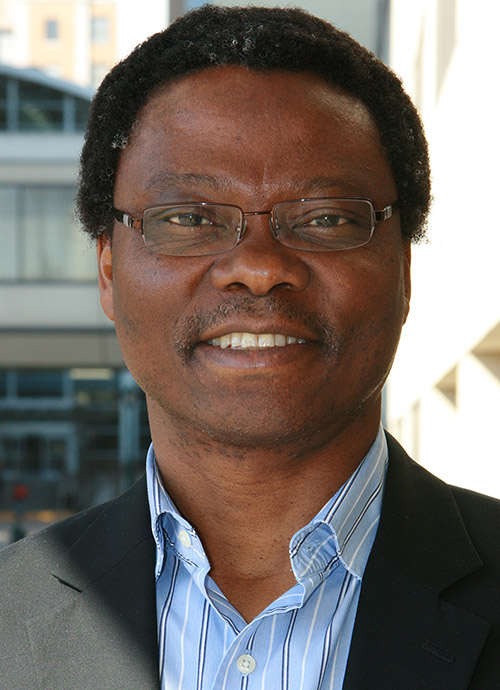Achilefu named to chemistry, optical societies
Honored for innovation in chemical sciences, contributions to optical imaging

Achilefu
Samuel Achilefu, PhD, the Michel M. Ter-Pogossian Professor of Radiology at Washington University School of Medicine in St. Louis, has been elected as a fellow to the Royal Society of Chemistry and to The Optical Society.
The Royal Society of Chemistry is a London-based professional association of chemical scientists with more than 50,000 members worldwide. Achilefu — who also is a professor of biochemistry and molecular biophysics and of biomedical engineering — was elected for his innovative approach of integrating chemical sciences with engineering, biology and medicine, and for his outstanding leadership to the scientific community.
He was elected to The Optical Society for pioneering the development of near-infrared molecular imaging and image-guided surgical resection of cancer, and exceptional leadership and service to the biomedical optics community. The Washington-based society is the oldest professional organization for optical engineers.
Achilefu pioneered the development of molecular optical imaging and therapy of human diseases using novel molecular probes and light-sensitive drugs. He discovered a new molecular entity that can be used to deliver drugs to many types of cancer. Achilefu also led a team that developed a wearable goggle-based imaging system for guiding surgical removal of tumors. He also co-discovered a treatment paradigm for cancer that incorporates a special type of light source and nanomaterials that can find and selectively trigger cancer cell death without harming healthy tissue.
A Siteman Cancer Center research member, Achilefu also is director of the Optical Radiology Lab at the Mallinckrodt Institute of Radiology. The lab and its team of biologists, chemists, engineers, medical scientists and physicists work collaboratively to harness the properties of light to develop methods for understanding, diagnosing and treating human diseases.






